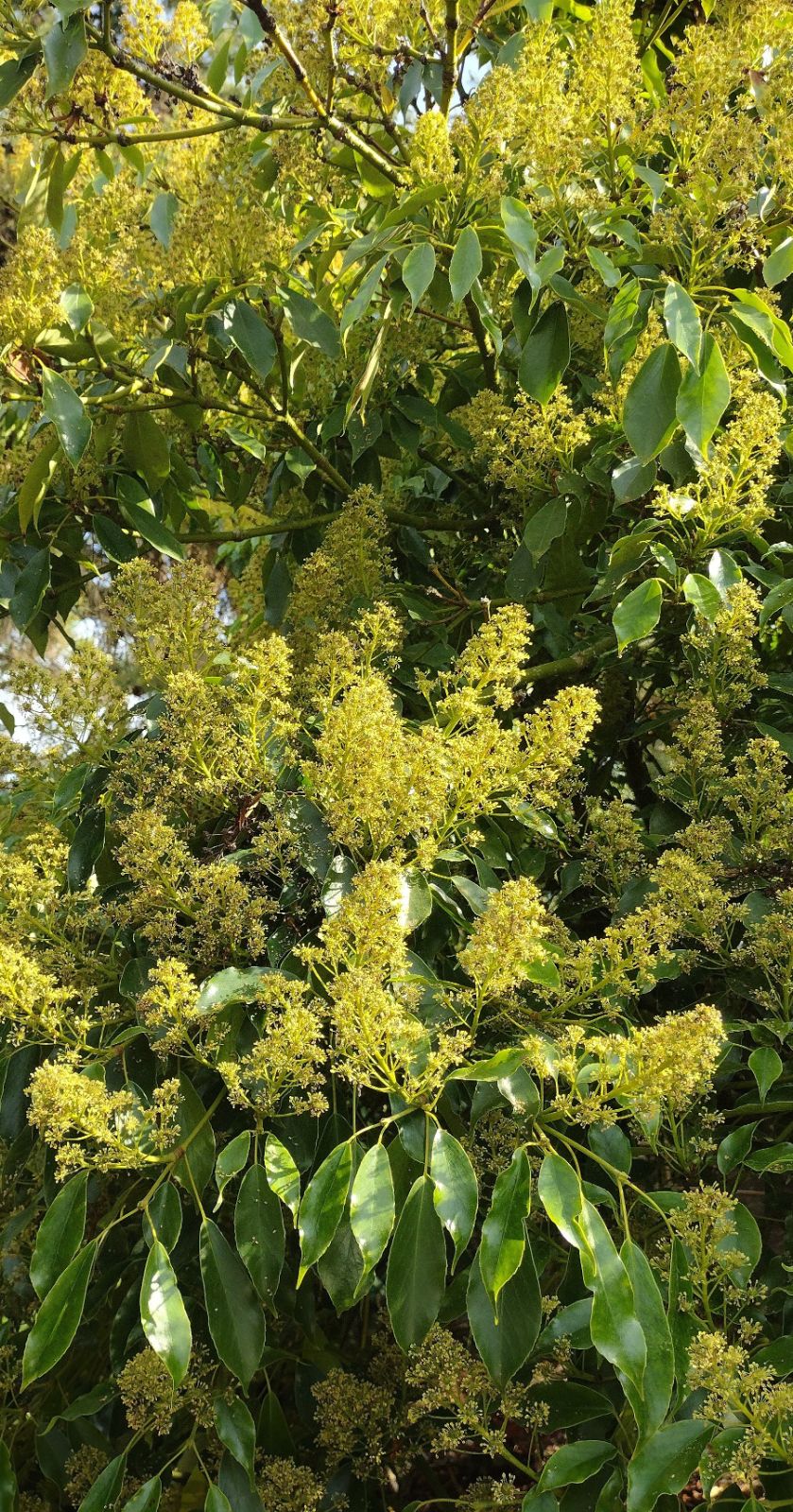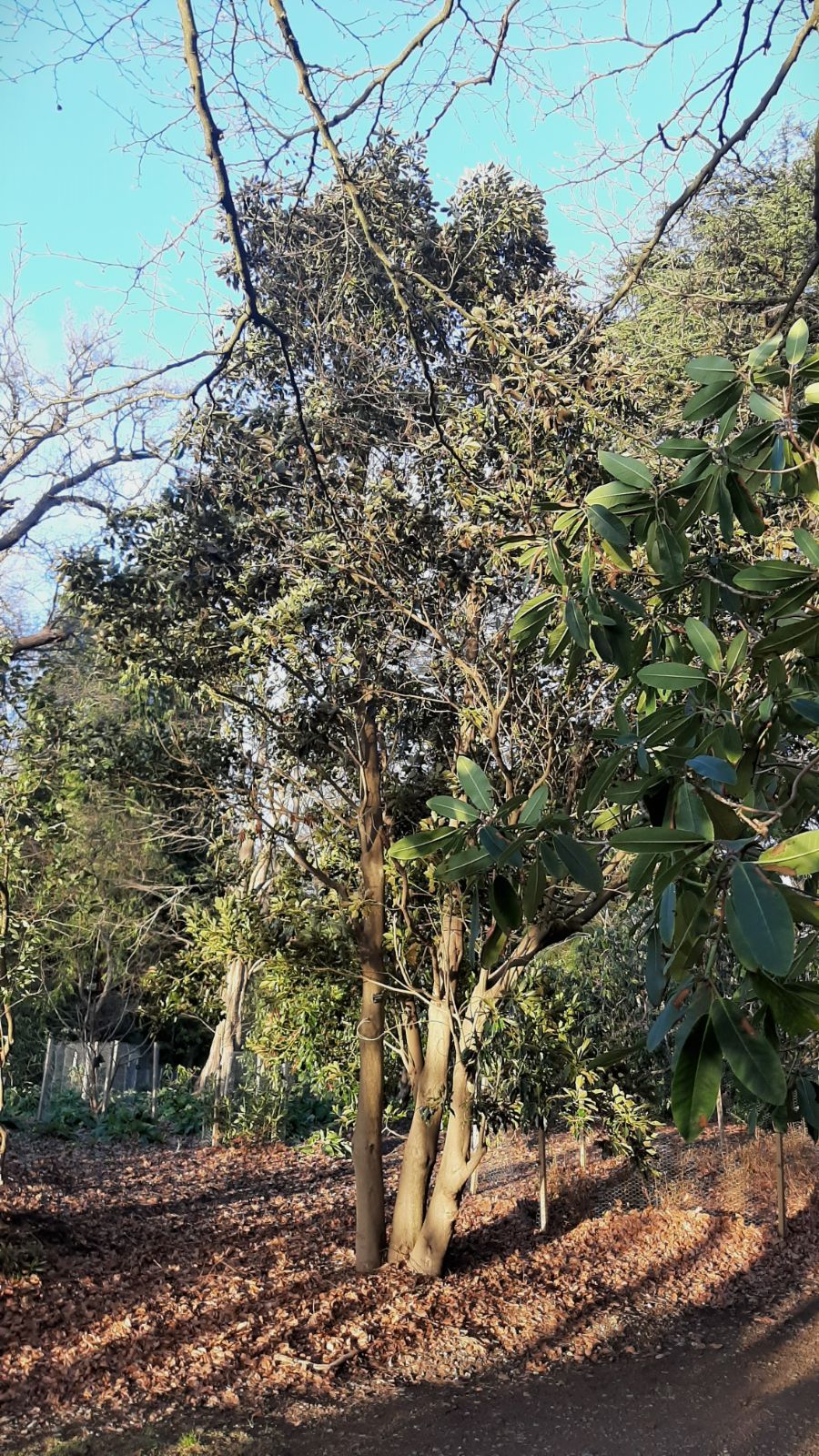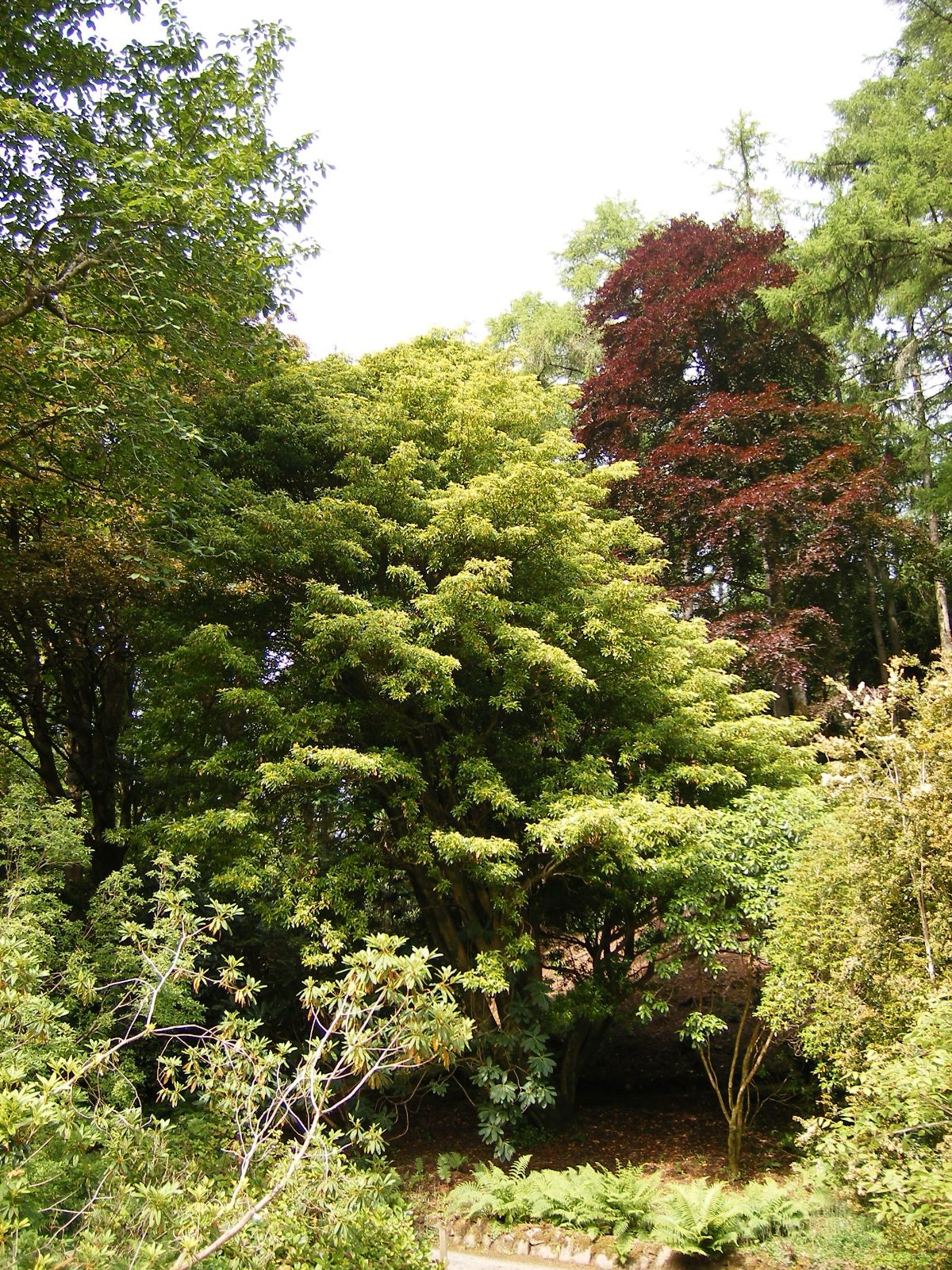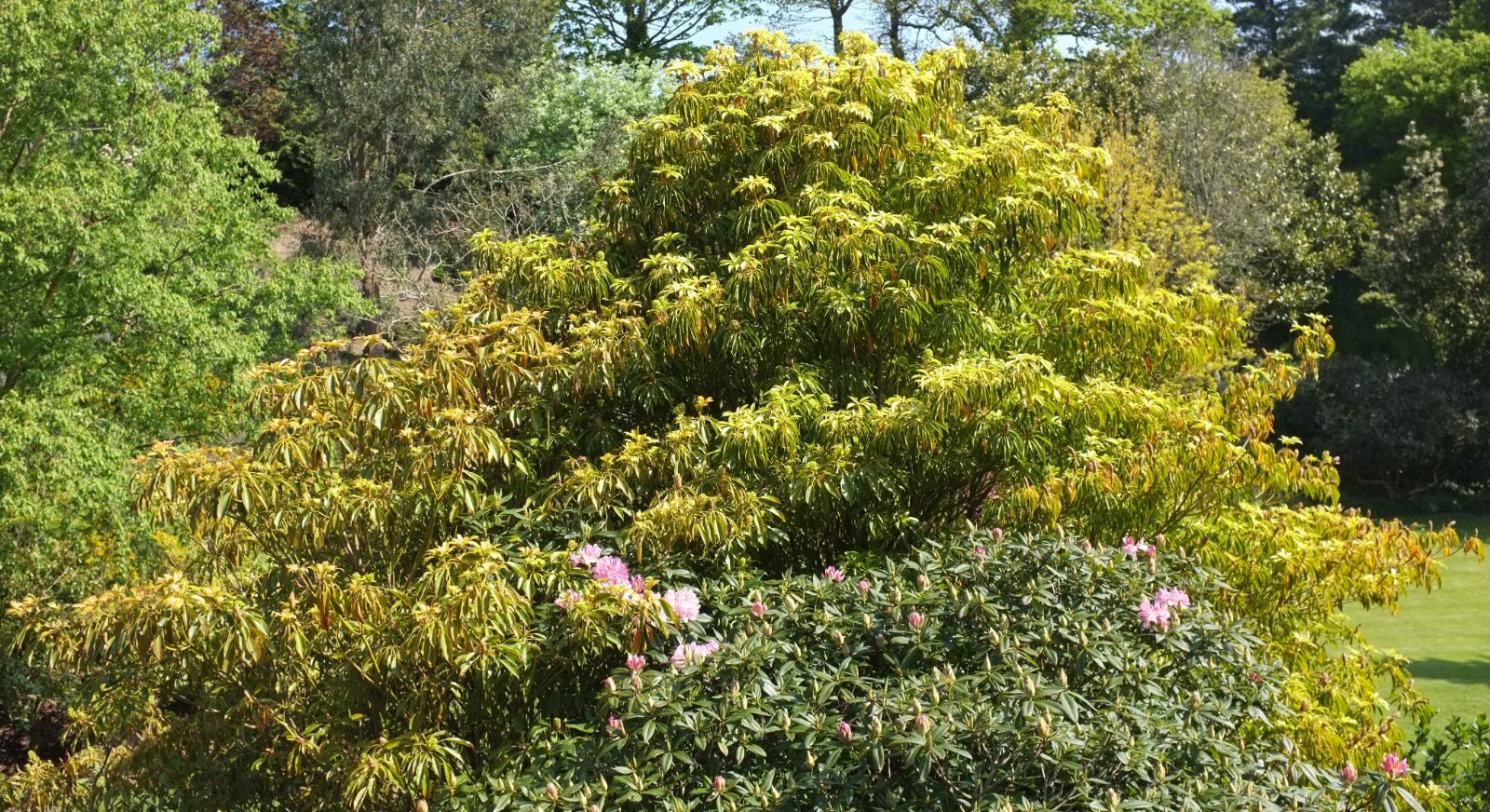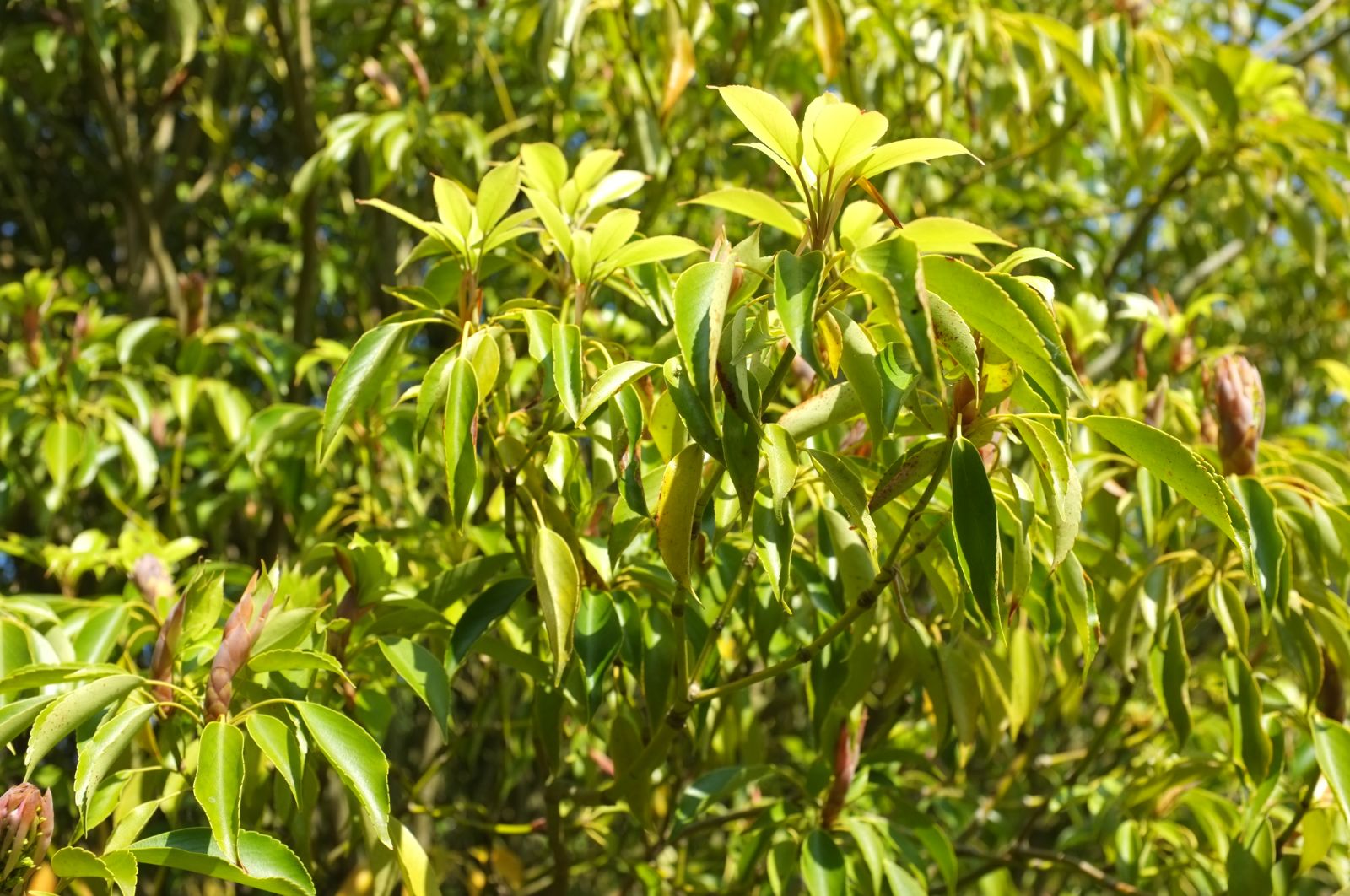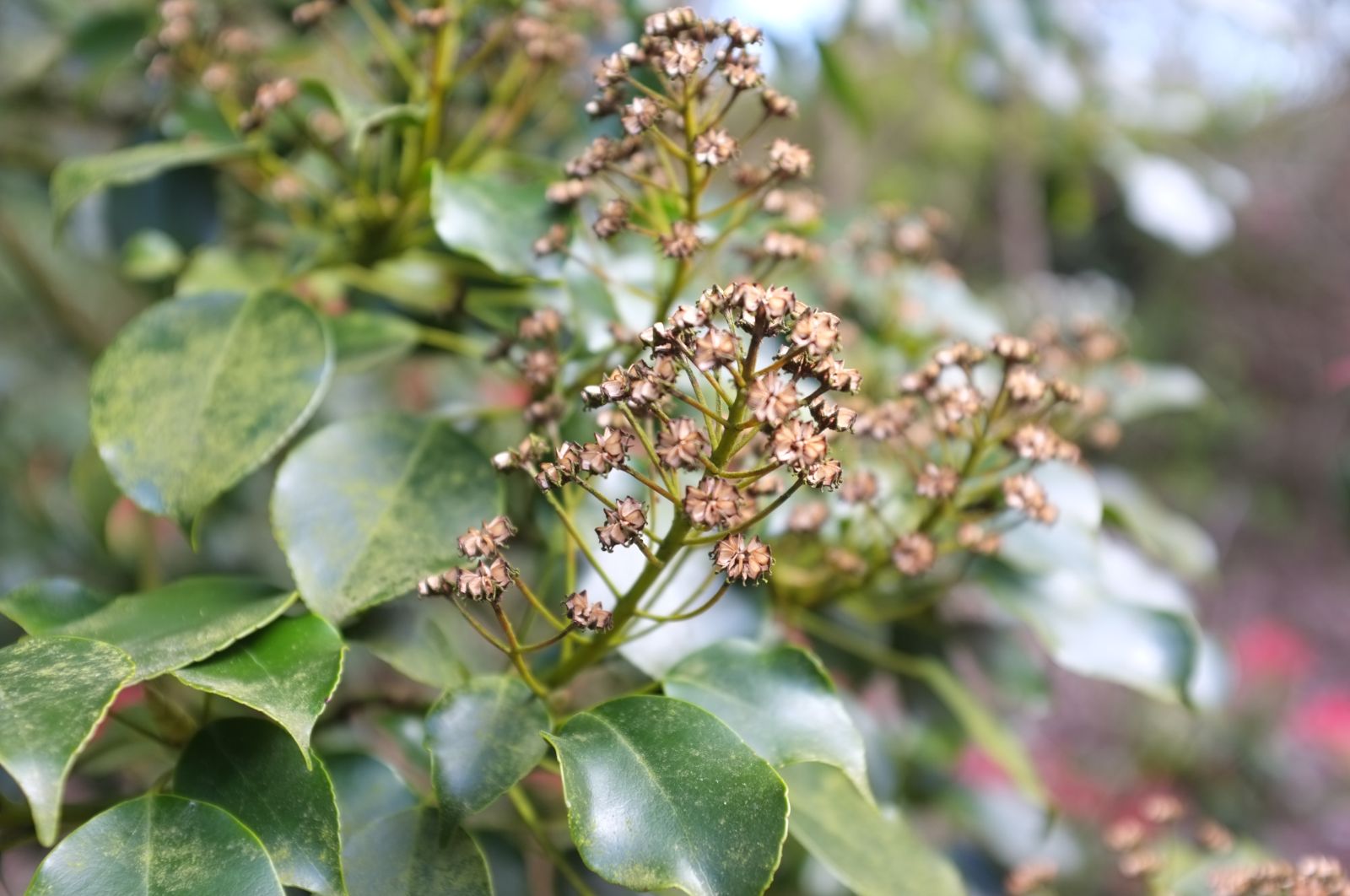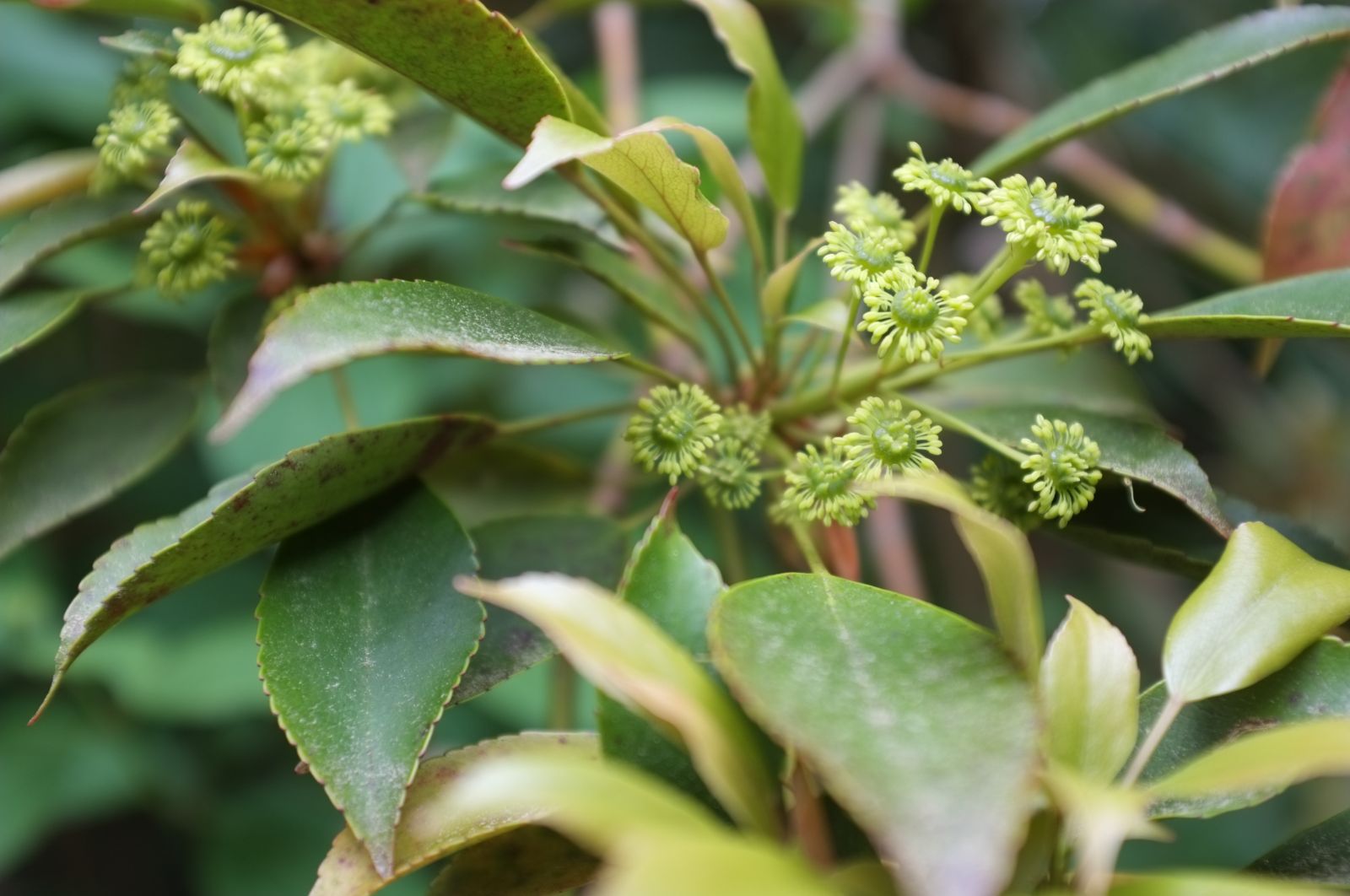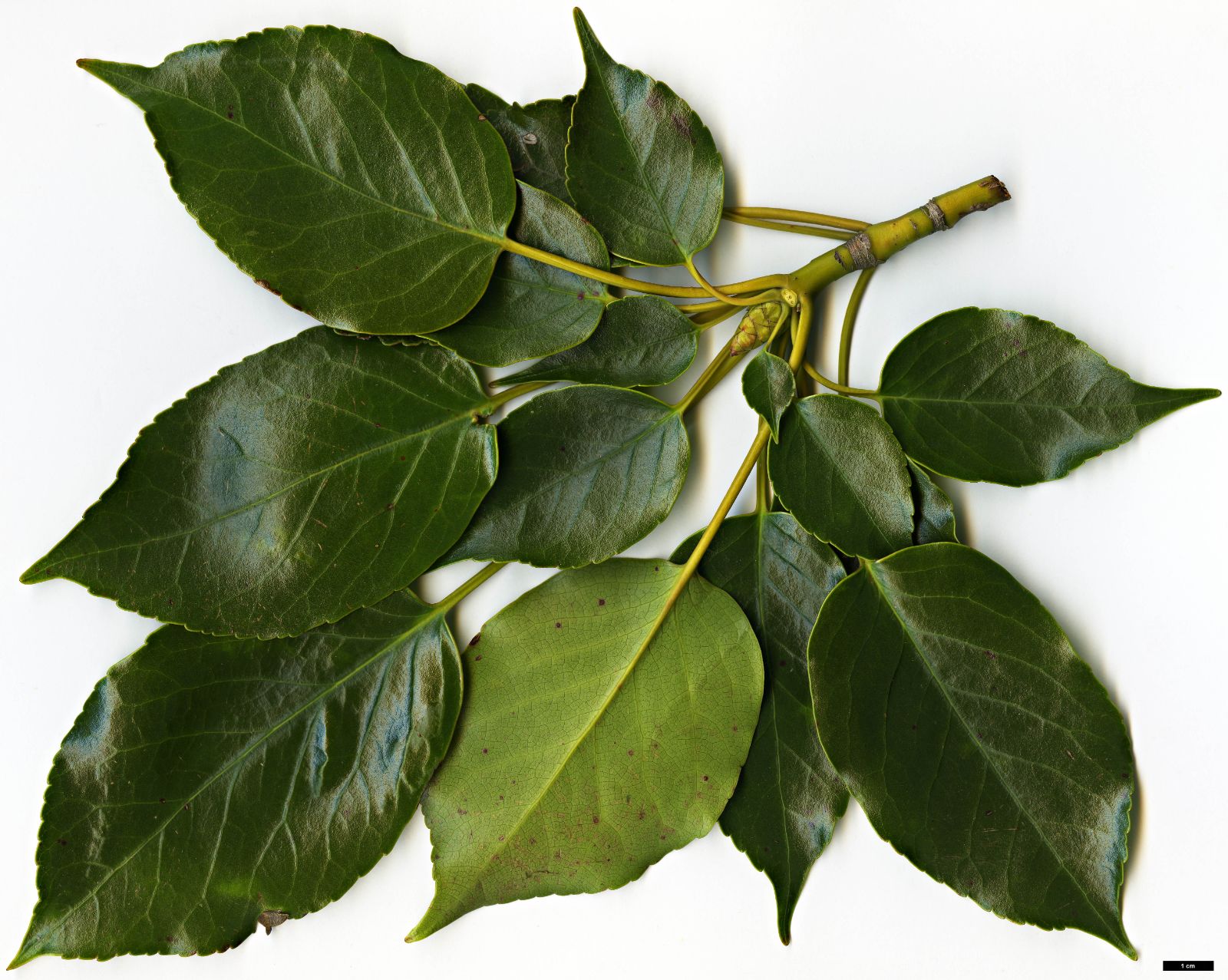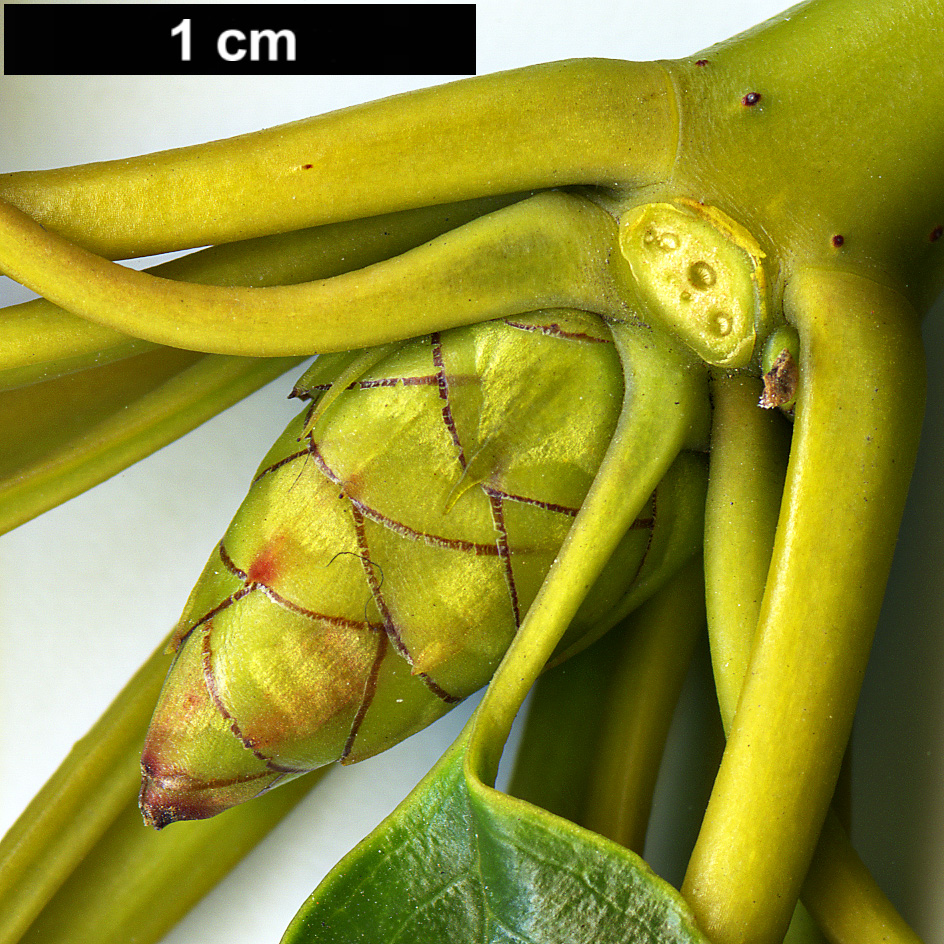Trochodendron aralioides
Sponsor
Kindly sponsored by
Fonden for Træer og Miljø, The Danish Foundation for Trees and Environment
Credits
Sven Bronckaers (2022)
Recommended citation
Bronckaers, S. (2022), 'Trochodendron aralioides' from the website Trees and Shrubs Online (treesandshrubsonline.
Genus
Common Names
- Wheel Tree
- 昆栏树 (kun lan shu)
- Ka-tang-lai
- Nagaba-no-yamaguruma
- Yamaguruma
- Birdlime Tree
- Japanese Birdlime Tree
- Parasol Tree
- Wheel-stamen Tree
Synonyms
- Trochodendron aralioides var. longifolium Maxim.
- Trochodendron aralioides f. longifolium (Maxim.) Ohwi
- Trochodendron longifolium Maxim.
Evergreen glabrous trees or shrubs to 20–25 m tall, developing a broad vase-shaped crown. Bark pale grey to brown, smooth but lenticellate, roughening with age. Branches sturdy. Branchlets shiny olive-green or mustard-yellow. Terminal bud to 2.1 × 0.8 cm, scales papery, pale tan or pale green with red-flushed apices, imbricate. Leaves crowded at the ends of the branches in tight spirals resembling whorls around the terminal buds, 5–12(–15) × 2–7 cm, broadly ovate to elliptic to oblanceolate, leathery, lustrous dark or dull green above, paler below, veins 5–7, base cuneate to broadly so, margins entire, crenate in upper half, apex acuminate to cuspidate; petiole 2–7cm long, stout. Flowers bisexual, regular or slightly asymmetric, apple-green or yellowish-green, 1–2 cm in diameter, borne on an upright raceme-like structure (reduced panicle) with a terminal flower and often branching further down, 5–13cm long with 10–20(–30) flowers. Perianth (sepals/calyx and petals/corolla) absent. Stamens 40–70, 3.5–7 mm long, spreading or reflexed in ¾ whorls, falling early; anthers 1.2–1.7 mm long, yellowish-brown. Carpels 6–11, free in a ring, the whole ovary obovoid, 2–2.5 mm, ovules 16–24 per carpel. Style persistent, 0.5–2 mm long. Fruits a ring of coalesced (united), many-seeded follicles, 7–10 mm in diameter, pale green to dark grey or brown, 7–10 seeds per follicle. Seeds 3–6 mm long, black, spindle-shaped. Flowering April-June, fruiting October-November. (Bean 1981; Andrews 2009; Hsu, Jane & Chen 2016).
Distribution Japan Honshu (southwards from Yamagata), Kyushu, Ryukyu Islands, Shikoku Taiwan
Habitat In Japan in mixed broad-leaved and evergreen forests at 300–2700 m asl. In Taiwan, T. aralioides can be found in the broad-leaved evergreen forests of the central mountain ranges, at 2000–3000 m and at lower elevations in the north, from 500–1250 m, where it still occurs in pure stands.
USDA Hardiness Zone 6b-9
RHS Hardiness Rating H6
Conservation status Not evaluated (NE)
Trochodendron aralioides has been of great botanical interest for many years and is now well known in gardens. It was first introduced to western cultivation in the Imperial Botanic Garden, St Petersburg, in 1864 by Carl Johann Maximowicz (1827–1891) (Andrews 2009). The Russian botanist collected it during his early expeditions in Japan, between September 1860 and February 1864. It grows there, and in Taiwan, in temperate mixed broad-leaved evergreen forests with a broad range of associates (Li & Chaw 1996). Its presence in South Korea has been debated for some time: Bean (1981) suggested it grew on Jeju island but not on the mainland Korean peninsula, and this may be why South Korea is often included in the species’ range in contemporary literature. A recent study, however, could not find any evidence of indigenous Trochodendron either on the peninsula or on Jeju island, even though the latter contains large areas of potential habitat (Chiu et al. 2021).
The first introduction to Britain is not clearly documented. The only known references are from Bean’s first edition, in which he states “First introduced from Japan by Messrs Veitch…” (Bean 1914), and the mention by James Harry Veitch himself, “introduced to Coombe Wood” (Veitch 1906), in his monumental work on the family firm, Hortus Veitchii. In April 1894 the tree in Coombe Wood flowered for the first time; flowers were sent to the RHS spring meetings in London where the plant was praised in the category of “New or Noteworthy plants”. After this exhibition material was sent to Kew where it was illustrated and this same material remains in the Kew Herbarium to this day.
Ernest Wilson later collected Trochodendron in Japan, in February and May 1914, under his numbers W 6041 and W 6629. William Robert Price (1886–1975) made three collections in Taiwan in 1907 and 1912. (W.R. Price 32, 32 bis, 66). With these and other later collections it became clear that Trochodendron is a more variable plant than the original Veitch collections suggested: the early introductions from Japan all had foliage typically broadly ovate to elliptic to oblanceolate, and a rather dull green to yellowish-green colour; the Taiwanese collections, on the other hand, consistently have remarkably glossy deep-green and often larger leaves (Andrews 2009). (It should be noted, however, that Roy Lancaster has observed plants with glossy rich-green leaves in Honshu, Japan (Andrews 2009)).
These and other observations, based on more recent collections, might suggest that Taiwan is a better source of material for cultivation in western gardens. Tony Kirkham and Mark Flanagan collected T. aralioides in Taiwan in October 1992 (ETOT 31), in the region between Chiayang and Kur-mungshan in Nantou County at 2200 m asl. There it was forming a large shrub in coarse shaly-loam on steep slopes in open woodland with Castanopsis carlesii, Schima superba and the occasional Pinus taiwaniana (Flanagan & Kirkham 2005). Ray Townsend and Mark Bridger, also collecting for Kew, targeted Trochodendron on Shikoku in 1999, giving rise to the collection SOKU 81.
Several more recent introductions come from Crûg Farm Plants, North Wales, whose expeditions have made several interesting collections. The only Japanese one is BSWJ 6080 which was collected on Mt. Miyanoura-Dake on the island of Yakushima, in 1998. Four collections were made from Taiwan: BSWJ 1651 was found on the Wynn-Jones’s second expedition to the island, in 1993; BSWJ 6727 was collected during their 1999 visit; CWJ 12357 was collected by Finlay Colley and Bleddyn Wynn-Jones in 2003; and RWJ 9845 was found during a Crûg-Rickard’s Ferns joint expedition in 2007. Based on these collections Bleddyn Wynn-Jones has observed “Trochodendron aralioides from Taiwan has always been popular here differing substantially from its Japanese counterpart by its larger glossy leaves and faster growth. In that respect my collection CWJ 12357 should not differ from our previous collections apart from its apple green colorations” (Crûg Farm Plants 2010).
However, according to Jef van Meulder (pers. comm. 2022), the former collection manager of Arboretum Bokrijk in Belgium, there is a clear difference in drought tolerance between Japanese and Taiwanese provenances of Trochodendron. The Japanese collections, with their dull green leaves, appear to be more adept at coping with summer heat and drought in Bokrijk. The same experience was seen in other Belgian gardens like Arboretum Wespelaar (K. Camelbeke pers. comm. 2022). Such traits might be something to keep in mind as hotter, drier summers become increasingly common in our regions.
Another interesting observation concerning Trochodendron is the possibly beneficial relationship with Sugi, Cryptomeria japonica. On the Japanese island of Yakushima Trochodendron is mostly seen in association with these conifers, and sometimes it can even be seen to grow as a epipyte on the base of the Sugi trunks or even several metres above the ground on old trees. When Ernest Wilson was in Japan in 1914 he also noticed this remarkable association, writing that the two species “have a curious predilection for one another. They grow upon the same old dead stump or trunk in close embrace to ripe old age with the Cryptomeria towering above its neighbor and shielding it from wind and storm” (Wilson in Veronese 2018).
The late Belgian dendrologist Jelena de Belder advocated experimenting with this association in cultivation. There is a good example of her influence at Herkenrode in Belgium, where Philippe de Spoelberch followed Jelena’s advice, planting what is now their largest Trochodendron next to a Cryptomeria. This plant came from the Hillier nurseries and was planted in the collection in 1973; by 2012 it had reached a good size of 6 × 6 m (Zwijgers 2012), and by 2022 was 8 × 8 m (K. Kamelbeke pers. comm. 2022). The tallest European specimen on record grows at Sidbury Manor, Devon, UK; in 2015 it was a shapely single-stemmed tree 18.5 m × 0.39 m dbh (Tree Register 2022). Another very sizeable plant grows at Arduaine garden, near Oban on the west coast of Scotland. According to Susyn Andrews this was a low-branching and multi-stemmed tree, over 17 m tall with a trunk diameter of 0.52 m at 0.5 m in 1998 (Andrews 2009); this may or may not be the same tree that by 2012 was 14 m × 0.82 m (Tree Register 2022).
Although quite hardy, Trochodendron benefits from some shelter in gardens, especially from cold drying winds. Spring frosts can also be a problem, damaging young growth and in extreme cases causing bark to split. The species excels in mild oceanic climates, such as those that prevail across the UK and Ireland and adjacent parts of western Europe, and on the west coast of North America. It is quite shade tolerant and seems to tolerate a wide range of soils, but it will not grow on chalk. The best growth seems to occur on free-draining, heavy, rich, humusy and moist soils; it is ideally suited to woodland gardens (Andrews 2009; Hogan 2008).
Propagation is by seed, which is quite straightforward, or by taking semi-ripe cuttings in autumn. The latter is the best way to propagate them according to Sean Hogan, who states that the best plants are those that are produced from slowly struck cuttings placed under mist during the winter months. Layering is also possible (Hogan 2008).
'Big Bertha'
A Daniel Hinkley selection from a 2007 Taiwanese collection. According to the Windcliff Plants catalogue : “This forms a globular semi-dwarf shrub with the same handsome durable foliage and clusters of charming yellow ‘parasols’ in summer. An ideal selection for a distinctive hedge or screen, for light shade or full sun” (Windcliff Plants 2021).
'Curried Gold'
A selection made by Cistus Design Nursery, Oregon. Grown from seed, this selection has “succulent golden stems”, while the leaves remain a glossy green, avoiding the purple patches that often occur on the foliage (Hogan 2008). In spring it has attractive golden growth (Grimshaw 2010).

